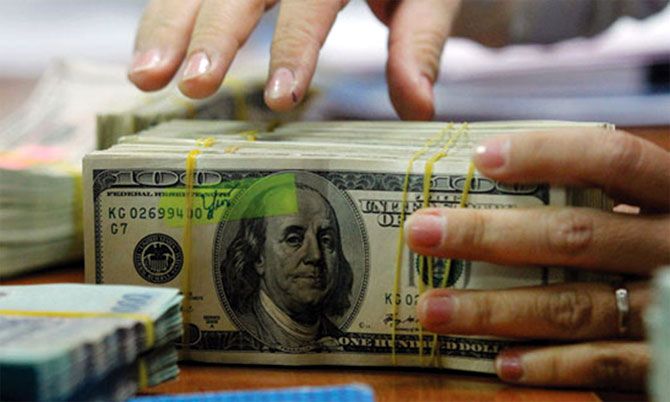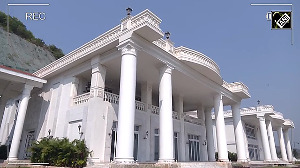The huge pressure on the currency market largely went unnoticed because of the demonetisation exercise.

November saw redemptions of more than $17 billion of the foreign currency non-resident dollar deposits, out of about $27 billion raised three years ago. But, the huge pressure on the currency market largely went unnoticed because of the demonetisation exercise.
Three years ago, banks had swapped dollars received in these deposits for rupees with the Reserve Bank of India. At the time of maturity, which is now, banks would give the rupees to RBI and receive dollars to pay their depositors.
In November, contrary to earlier expectations, banks did not face any problem meeting their obligations as not only were they getting huge deposits due to scrapping of old high-value notes, a lot of the FCNR deposits were leveraged investments, which means non-resident Indians had taken loans from the same banks to invest in these deposits.
Of about $1.5 billion of FCNR loans that Bank of India received, $1.1 billion was leveraged, revealed Melwyn Rego, Bank of India’s managing director and chief executive officer at the bank’s results conference on November 10.
It was the same case with other banks, including State Bank of India, which had raised about $2 billion, said an official of the bank. Thus, banks sailed through the FCNR redemption as they had more than adequate rupees to swap for dollars.
For RBI, it shouldn’t have been a challenge to swap the rupees for dollars to repay banks, which it had booked three years ago. At that time, RBI had covered the foreign exchange risk by swaps -- selling dollars in the spot market and buying them in the forward market.
However, trouble started when counterparties (typically foreign banks) said that the entire dollar amount may not be available as exporters were not ready to part with their dollars to counterparties. Exporters were expecting higher value in holding on to dollars.
The forward premium on future dollars, which should be positive, turned negative for November and nearly collapsed for the coming months even as the rupee was under tremendous depreciation pressure. The general rule is that in an abundant liquidity scenario and when interest rate is all set to fall, forward premium on the dollar should rise sharply. Thus, what happened in November is a rare event in the forex market.
The average one-year forward premium in the past five years was close to 5.4-5.5%. In November, it fell to 3.4%. The short-term premium, which is typically around five per cent, fell to 2.5%. The month-end premium turned negative.
In the spot market, the acute dollar shortage pushed the rupee to a record low of 68.87, prompting RBI to sell a large amount of dollars in the market. While the exact value could not be ascertained, currency dealers say RBI sold at least $5 billion in the second half of November to meet the dollar demand, accentuated by FCNR-related pressure as well as liquidation of more than $2 billion in local assets by foreign investors.
As foreign banks started buying dollars from the spot market to honour their contract with RBI, they sold the dollars in the forwards market to square off the deal. The most active forwards are those running between one month to three months.
Therefore, banks bought $17-18 billion in the spot market, while contracting to sell the greenback in the next three months. As a huge amount of dollar supply hit the market in these future dates, the prices for forward dollars fell and the premium charged for them collapsed.
Since exporters count the premium as an important source of their earnings, seeing the premium collapsing, they decided to hold back future selling plans till they get a healthy premium. RBI, according to currency dealers, also sold forward dollars, thereby, skewing the forward premium further.
To correct this, RBI started buying dollars in the forward market soon after, which stabilised the premium to some extent. However, the dollar shortage continues.
Abhishek Goenka, MD of forex advisory firm IFA Global, said, “The sharp rise in the US bond yields and the subsequent softening of Indian yields have meant that the interest rate differential between the two countries has narrowed considerably and this may lead to further dollar outflow and therefore continuation of dollar shortages in the market.” If the US Federal Reserve hikes rates in mid-December and foreign investors liquidate their holdings in India, the dollar shortage will worsen.
RBI, in this scenario, will have to constantly support the market for normal currency market functioning, say currency dealers.












 © 2025
© 2025